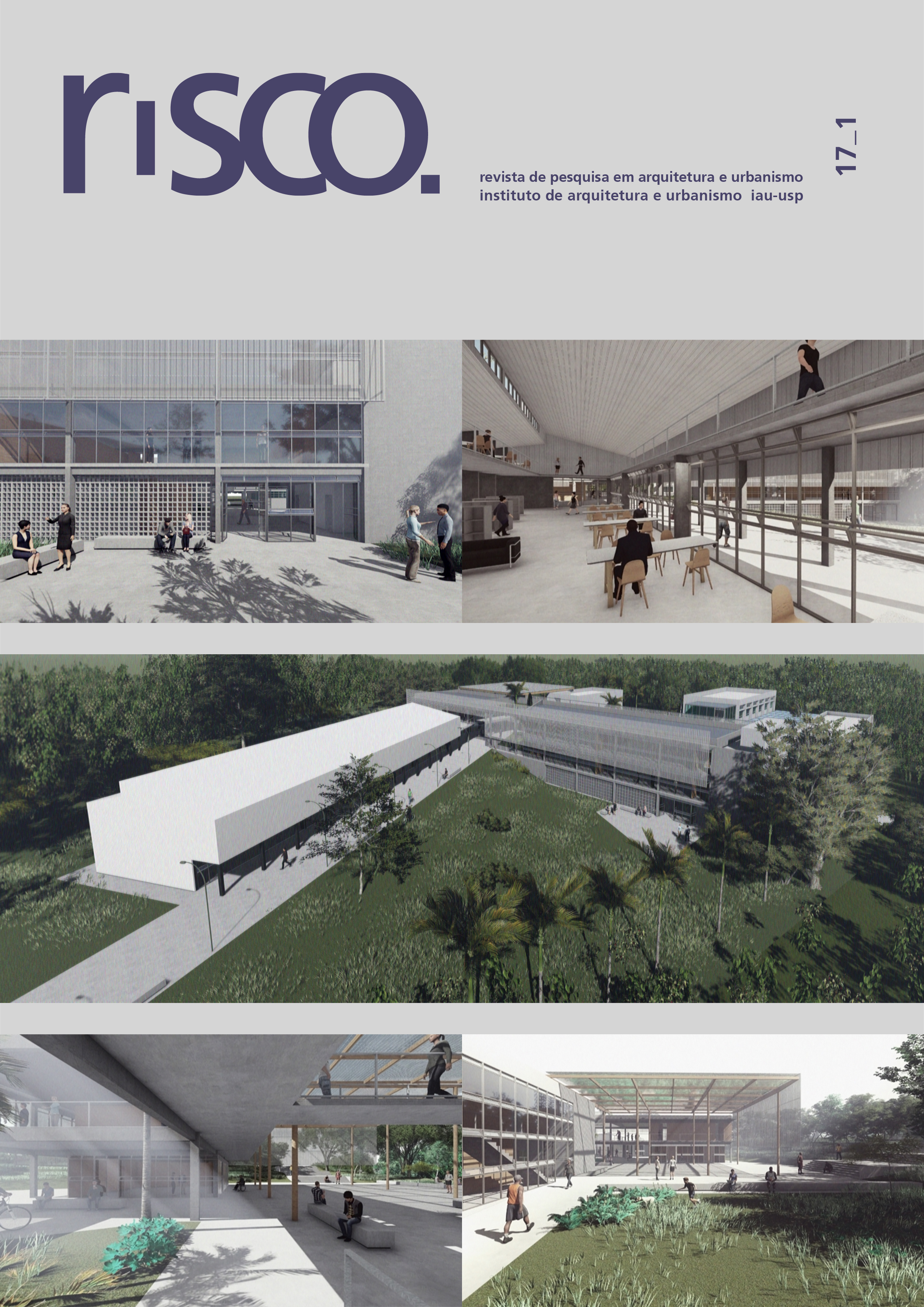Fortified enclaves and urban segregation: the contemporary urbanization dynamics of Ribeirão Preto
DOI:
https://doi.org/10.11606/issn.1984-4506.v17i2p41-59Keywords:
Fortified enclaves, Ribeirão Preto, Urban segregationAbstract
The article analyzes the diffusion of fortified enclaves - enclosed spaces for housing, leisure or consumption - in the recent urbanization of Ribeirão Preto (SP), a phenomenon that has intensified in the eastern and southern areas of the municipality through horizontal and vertical residential condominiums, shopping centers , office suites, private schools and leisure centers. The public in these spaces manifests in the fear of violent crime the main reason for abandoning the public space. The concentration of enclaves in the southern sector intensifies the socio-spatial segregation between this region and the northern sector, the poorest territory, where popular housing estates and slums predominate.
Downloads
References
BAUMAN, Zygmunt. Confiança e medo na cidade. 1. ed. Rio de Janeiro: Zahar, 2009.
ESTATUTO DA CIDADE: Guia para implementação pelos municípios e cidadãos: Lei nº 10.257, de 10/7/2001, que estabelece diretrizes gerais da política urbana. 2. ed. Brasília: Câmara dos Deputados, Coordenação de Publicações, 2002.
CALDEIRA, Teresa Pires do Rio. Cidade de muros: crime, segregação e cidadania em São Paulo;tradução de Frank de Oliveira e Henrique Monteiro. São Paulo: Editora 34/Edusp, 2000.
CALDEIRA, Teresa Pires do Rio. Enclaves Fortificados: a nova segregação urbana. Novos Estudos Cebrap, n. 47, 1997.CARVALHO, José Murilo de. Cidadania no Brasil: o longo caminho. Rio de Janeiro: Civilização Brasileira, 2001.
DAL POZZO, Clayton Ferreira. Fragmentação socioespacial em cidades médias paulistas: os territórios do consumo segmentado de Ribeirão Preto e Presidente Prudente. Tese (Doutorado) em Geografia – Programa de Pós-Graduação em Geografia da Universidade Estadual Paulista (UNESP), Presidente Prudente, 2015.
FERNANDES, Maria Esther. et al. A cidade e seus limites: as contradições do urbano na “Califórnia Brasileira”. São Paulo: Annablume; Fapesp; Ribeirão Preto: Unaerp, 2004.
FIGUEIRA, Tânia Maria Bulhões. Produção social da cidade contemporânea: análise dos condomínios urbanísticos e loteamentos fechados de alto padrão do subsetor sul de Ribeirão Preto – SP. Dissertação (Mestrado) em Arquitetura e Urbanismo – Instituto de Arquitetura e Urbanismo da Universidade de São Paulo, São Carlos, 2013.GEHL, Jan. Cidades para pessoas. 2. ed. São Paulo: Perspectiva S.A., 2014.
GOULART, Jefferson Oliveira; BENTO, Patricia Pechini. Enclaves fortificados e segregação urbana: o caso de Jundiaí. Sociedade e Cultura, v. 14, n. 1, jan./jun. 2011.IBGE. Censo Demográfico 2010. Disponível em <https://cidades.ibge.gov.br/brasil/sp/ribeirao--preto/panorama>. Acesso: 31 out. 2017.
KOWARICK, Lúcio. Espoliação Urbana. Rio de Janeiro: Paz e Terra, 1979.
NEGRI, Barjas. As políticas de descentralização industrial e o processo de interiorização em São Paulo: 1970-1985. In: TARTAGLIA, J.C. & OLIVEIRA, O.L. (orgs.). Modernização e desenvolvimento do interior de São Paulo. São Paulo: Ed. UNESP, 1988.
PECCI, Guilherme Moreira.Interior de muros: expansão e formação de condomínios e loteamentos fechados em Ribeirão Preto. Monografia de Pós-Graduação. Ribeirão Preto: FAAP, 2014.
SANTOS, Milton. A urbanização brasileira. São Paulo: Hucitec, 1993.
SENNETT, Richard. O declínio do homem público: as tiranias da intimidade. São Paulo, Com-panhia das Letras, 1993.
SPOSITO, Maria Encarnação Beltrão; GOÉS, Eda Maria. Espaços fechados e cidades: insegurança urbana e fragmentação socioespacial. São Paulo: Ed. Unesp, 2013.
SOUZA, Jessé. A radiografia do golpe: entenda como e porque você foi enganado. Rio de Janeiro: LeYa, 2016.
Downloads
Published
Issue
Section
License
Autores que publicam nesta revista concordam com os seguintes termos:
a. Autores mantém os direitos autorais e concedem à revista o direito de primeira publicação, com o trabalho simultaneamente licenciado sob a Licença Creative Commons Attribution BY-NC-SA que permite o compartilhamento do trabalho com reconhecimento da autoria e publicação inicial nesta revista.
b. Autores têm autorização para assumir contratos adicionais separadamente, para distribuição não-exclusiva da versão do trabalho publicada nesta revista (ex.: publicar em repositório institucional ou como capítulo de livro), com reconhecimento de autoria e publicação inicial nesta revista.
c. Autores têm permissão e são estimulados a publicar e distribuir seu trabalho online (ex.: em repositórios institucionais ou na sua página pessoal) a qualquer ponto antes ou durante o processo editorial, já que isso pode gerar alterações produtivas, bem como aumentar o impacto e a citação do trabalho publicado (Veja O Efeito do Acesso Livre).

















